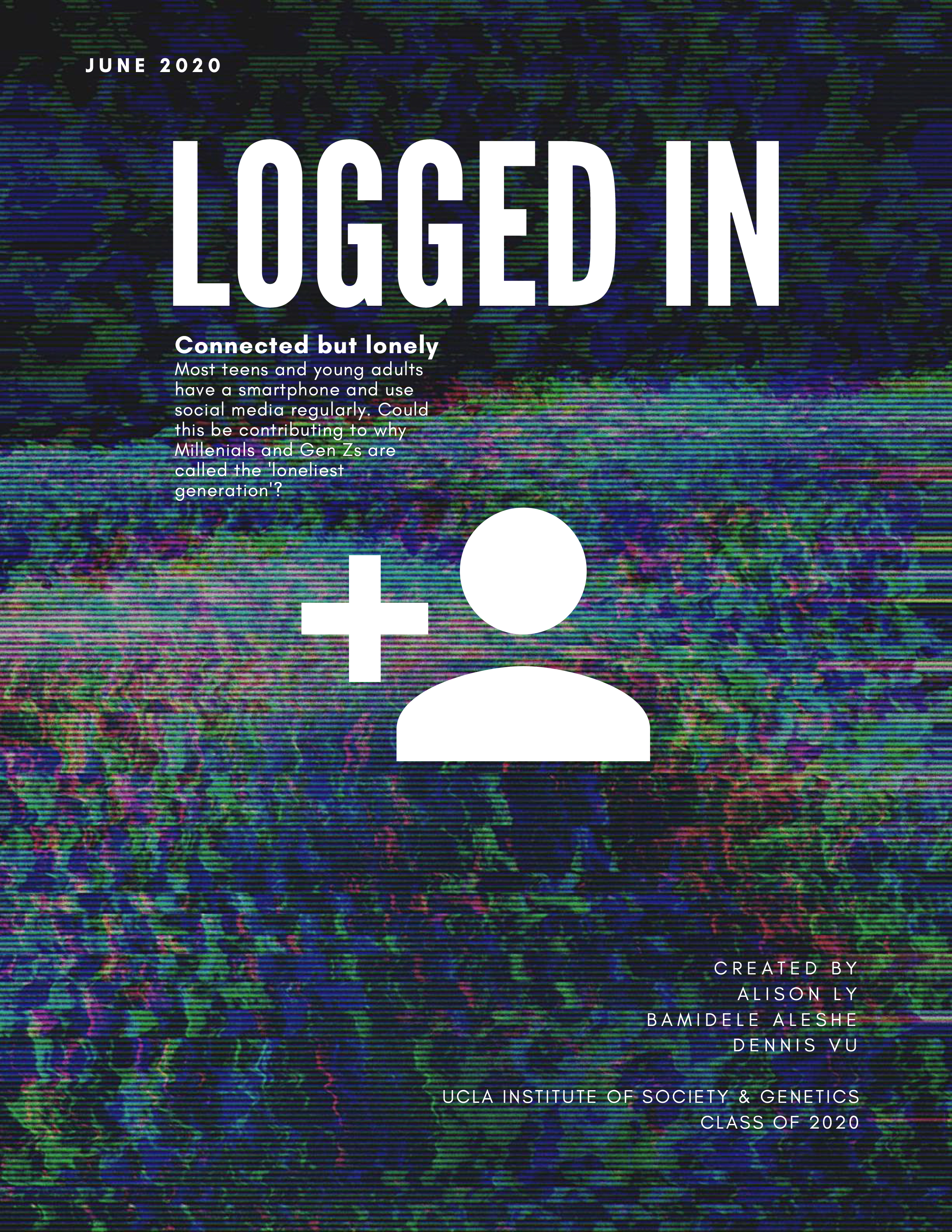Logged In: Social Media Use and Loneliness in Adolescence

Award for Pushing the Limits of the Form
By: Alison Ly, Bami Aleshe, Dennis Vu
CLICK TO SEE WHAT HAPPENED WHEN THESE 3 OVERUSED SOCIAL MEDIA! [NOT CLICKBAIT] (SHOCKING!)
Read the Magazine Now On Issuu or As a PDF (Higher Quality)
Over the past decade, social media has become not only a pastime for young people, but a source of income via platforms like Instagram, YouTube, and TikTok, with more teens pursuing careers on these platforms every year. Criticism about ‘internet addiction’ has followed this rise in usage, especially when discussing adolescents (teens and adults younger than 25). How does overusing social media contribute to the “loneliness epidemic” and psychological and neurobiological risks to our growing brains? Follow a narrative three adolescents as they navigate the ups and downs of social media.
This magazine isn’t meant to sound like we’re scolding Gen Z. The thing is, we all know the benefits of social media (ranging from documenting/spreading protests for the past two weeks, to being just a fun outlet where friends tag you in memes). We also all know that high social media use (SMU) isn’t healthy, and we also know that loneliness isn’t healthy, but the actual research studies on loneliness may surprise you. This project is meant to define all the possible loneliness-related risks of the new digital age, with a focus on young people. We’ve compiled concepts that can help us better understand our behavior in relation to high SMU and loneliness, including digital stress, FOMO, upward social comparison, negativity bias, and correspondence bias. Read for more about health effects of loneliness, social media addiction, how excessive SMU contributes to the ““loneliness epidemic””, and the complexities of adolescent brain development.
-Team ABD
comments powered by Disqus